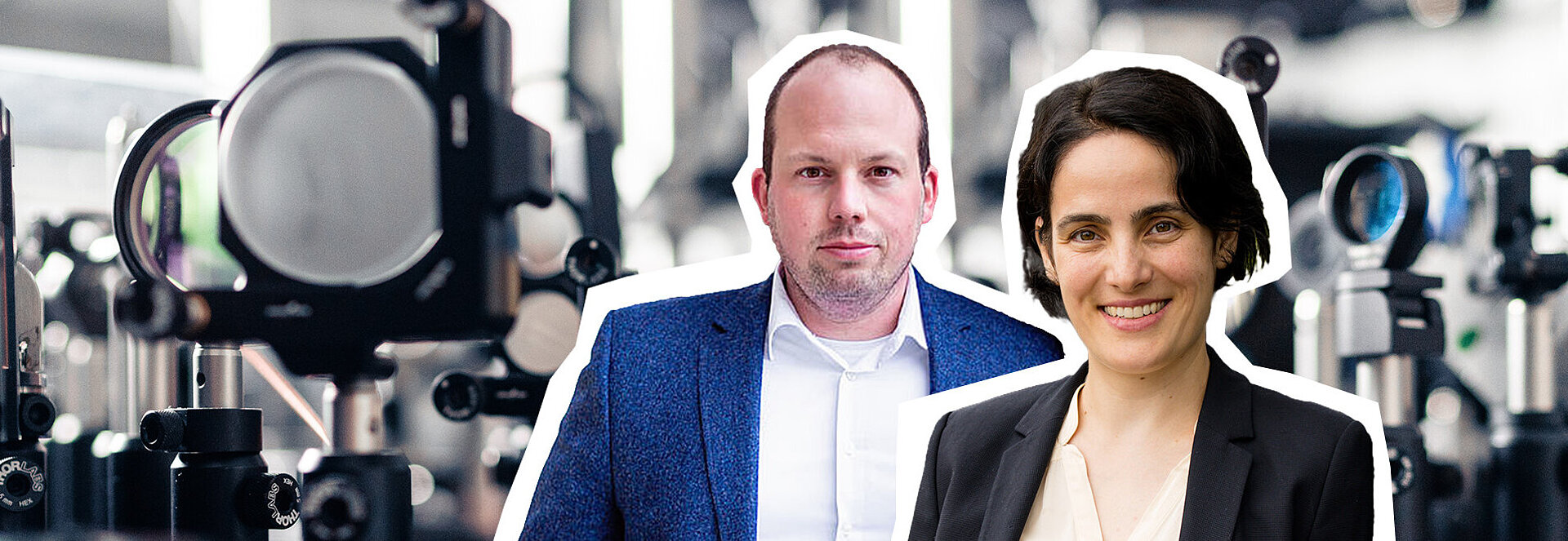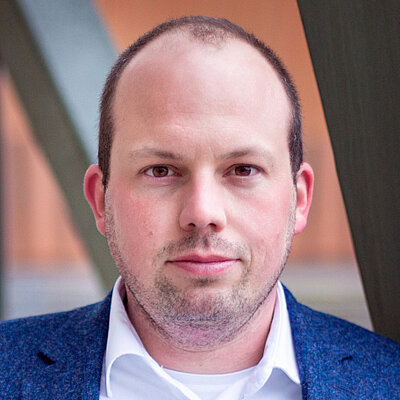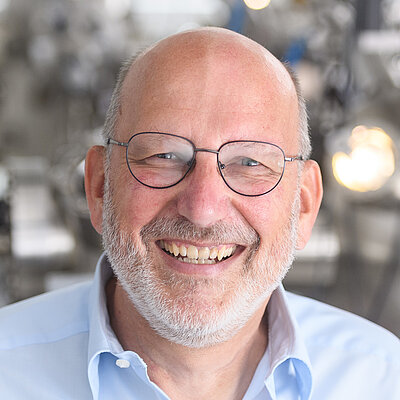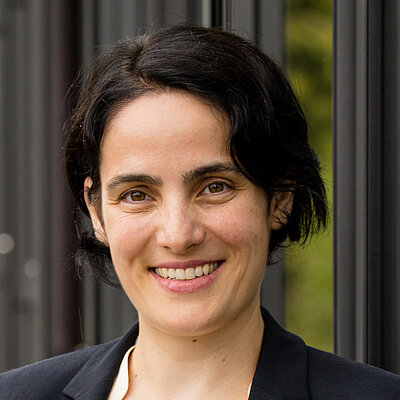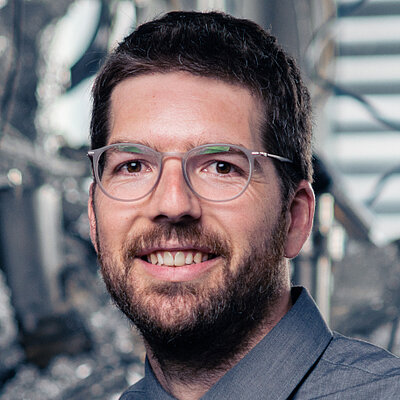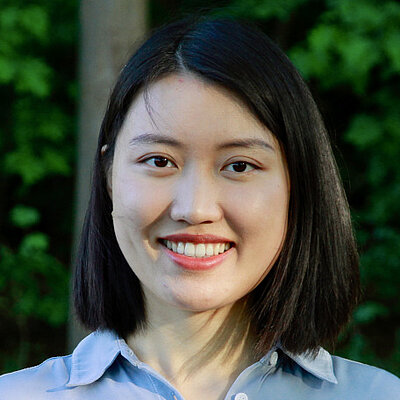Quantum Photonics and Topology
Using a highly effective laser network the size of a grain of sand, a German-Israeli research team from the Cluster of Excellence ct.qmat has achieved a scientific breakthrough in topological photonics. Led by Sebastian Klembt from Würzburg and Prof. Mordechai Segev from the Technion Haifa, which is associated with the cluster, a network of surface-emitting lasers has been made to act as a single laser for the first time. The result is the first topological laser—nominated among the top 10 of the "Breakthrough of the Year Award" 2021 by the renowned British journal Physics World, published by the British Institute of Physics (IoP). The lasers were manufactured in the excellent cleanroom facilities of the Gottfried Landwehr Laboratory for Nanotechnology at the University of Würzburg.
Photonics for Tomorrow's Computers
Tiny Oscillations for Maximum Performance
The laser network created in Würzburg and Haifa couples vertical resonators, i.e. very small oscillating systems. Today, microlasers—called vertical-cavity surface-emitting lasers (VCSELs)—are already firmly a part of everyday use in cell phones, car sensors or data transmission in fiber-optic networks. However, the output power that these tiny VCSEL devices can generate has been limited until now. This is where the German-Israeli project promises new potential: the unique geometric arrangement of the mini-lasers on a chip creates a photonic topological insulator platform. The result is a very compact and highly efficient laser. It is not limited in the number of laser elements and is not affected by defects or temperature fluctuations. Klembt's and Segev's theoretical and experimental demonstration of such a system now paves the way for a range of future technologies in medical devices, communications, and a variety of practical applications.
Building Bridges
Cooperation in the spirit of progress is part of the DNA of Germany's only interregional Cluster of Excellence ct.qmat—Complexity and Topology in Quantum Matter. The cluster not only connects the two universities in Würzburg and Dresden, it also builds bridges over long distances. Together, almost 300 scientists from more than 30 countries are researching topological quantum matter.
The cluster is particularly committed to promoting young scientists. Doctoral students were strongly involved in the German-Israeli laser network research project as an important part of the team. "We are a strong network—successful in research, passionate about our work, open to exchanging ideas and new perspectives," emphasizes Würzburg cluster spokesperson Prof. Ralph Claessen. "We combine theory and experiment as well as the expertise of chemistry, physics and other fields of science."
New Professorship for Novel Research Area: X-Ray Quantum Optics
Adriana Pálffy-Buß, Professor of Theoretical Quantum Information and Quantum Optics since 2022, brings her expertise in the brand-new research field of X-ray quantum optics to the Cluster of Excellence ct.qmat. This research area uses extremely short-wavelength X-rays instead of visible light to study minute particles and could contribute to new applications such as X-ray lasers.
Pálffy-Buß is thus continuing the Würzburg X-ray tradition in a new quantum direction, since Wilhelm Conrad Röntgen discovered X-rays here in 1895. In 2019, she received the Röntgen Prize of the Justus Liebig University Giessen and the Hertha Sponer Prize of the German Physical Society. For her research group at JMU Würzburg, she is looking for PhD students in theoretical quantum optics (applications: adriana.palffy-buss(at)physik.uni-wuerzburg.de).
Impetus for International Careers
The Cluster of Excellence guides around 225 PhD students and postdocs from all over the world on their career path. One of them is Shiyu Huang from China, who completed the master's program in Organic and Molecular Electronics at TU Dresden in 2021 where she had the chance to work with physicist Prof. Karl Leo, a pioneer in the field of organic semiconductors. Leo is one of the 25 principal investigators of the Cluster of Excellence ct.qmat, where his research focuses on semiconductor-based topological photonics. Now, Shiyu Huang is moving to Würzburg to do her doctorate under the supervision of Sebastian Klembt. A special link between Würzburg and Dresden is also created by the Hallwachs-Röntgen Postdoc Program for outstanding postdocs doing research at both universities.
Hallwachs Röntgen Postdoc Program for the Best Minds
The Hallwachs-Röntgen Postdoc Program targets outstanding young researchers with great potential who have recently received their PhD. It combines two of the world's most active research environments for topological condensed matter physics: the Julius-Maximilians-Universität Würzburg (JMU) and the Technical University of Dresden together with the research institutes of the Max Planck Society, the Helmholtz Association and the Leibniz Association. Funding is provided continuously for up to four postdocs.
Atom by Atom—Materials Competence in Würzburg
Research at the University of Würzburg revolves around cutting-edge technologies, particularly in the field of semiconductor-based materials. The Würzburg Molecular Beam Epitaxy (MBE) system is one of the largest in the world; these MBE systems tailor materials atom by atom, allowing crystals of topological insulators to be produced under controlled conditions, virtually free of impurities. The crystalline material can then be built up on any carrier or substrate, for example, on quantum chips.
Pulsed laser deposition (PLD) is another technique used in the Würzburg labs. In this process, a synthesis of novel materials is achieved by using a power laser to evaporate material into a plasma plume, which condenses eventually as a crystalline film (laser ablation). These and other brand-new methods are transforming the research landscape, and the world we live in.
ct.qmat: Cooperation for Cutting-Edge Research
Since 2019, the Cluster of Excellence ct.qmat has been supported by Julius-Maximilians-Universität (JMU) Würzburg and Technische Universität (TU) Dresden and combines the expertise of both physics departments. It is one of the world's leading research centers and is funded by the Excellence Strategy of the German federal and state governments. Out of 57 clusters of excellence, it is the only interregional project of its kind in Germany and is dedicated to fundamental research on quantum materials in the fields of:
- Topological Electrons
- Quantum Magnetism
- Topological Photonics
- Tailoring Topological Functionality
The scientists in the cluster investigate how components of the future will be able to conduct electricity or light without loss and store gigantic amounts of information. The focus is on topological quantum matter, which reveals surprising phenomena under extreme conditions such as ultra-low temperatures, high pressure or strong magnetic fields.
The research network works closely with five non-university partner institutions:
- Bavarian Center for Applied Energy Research e. V. (ZAE Bayern).
- Helmholtz-Zentrum Dresden-Rossendorf e.V. (HZDR)
- Leibniz Institute for Solid State and Materials Research (IFW) Dresden e.V.
- Max-Planck-Institute for Physics of Complex Systems, Dresden
- Max-Planck-Institute for Chemical Physics of Solids, Dresden
More about the University of Würzburg



